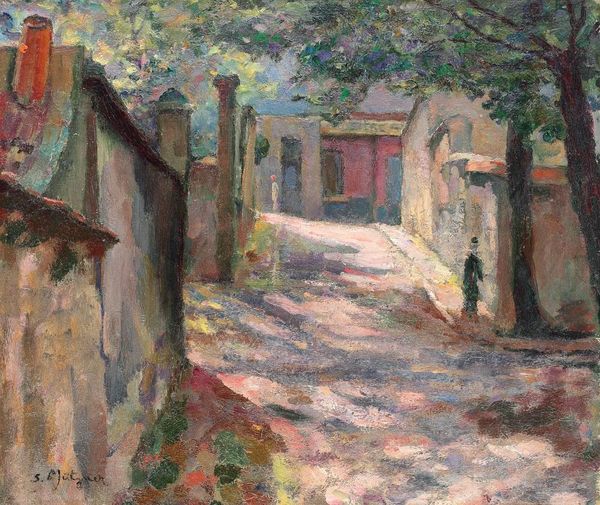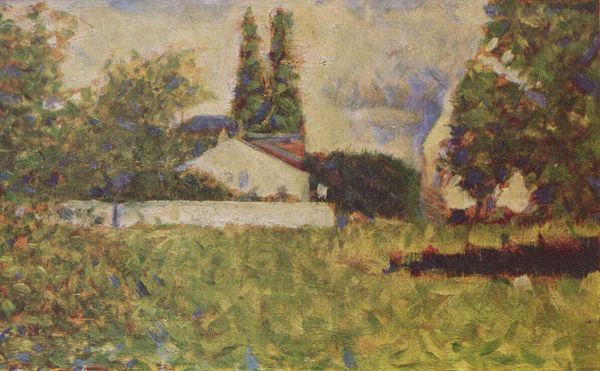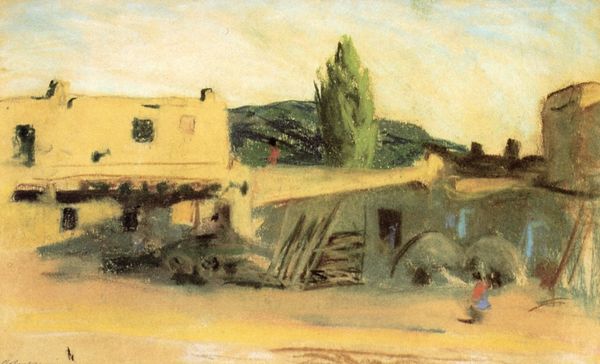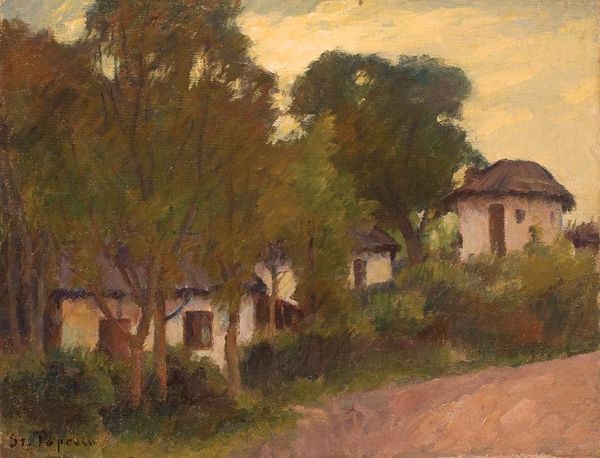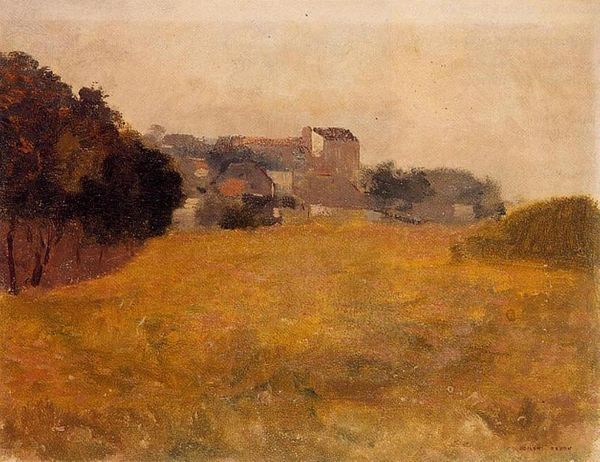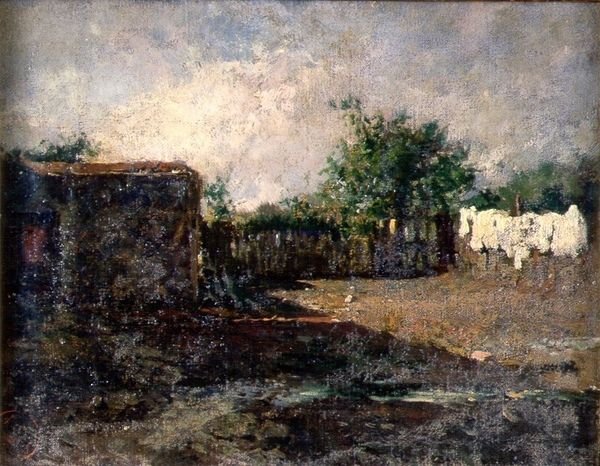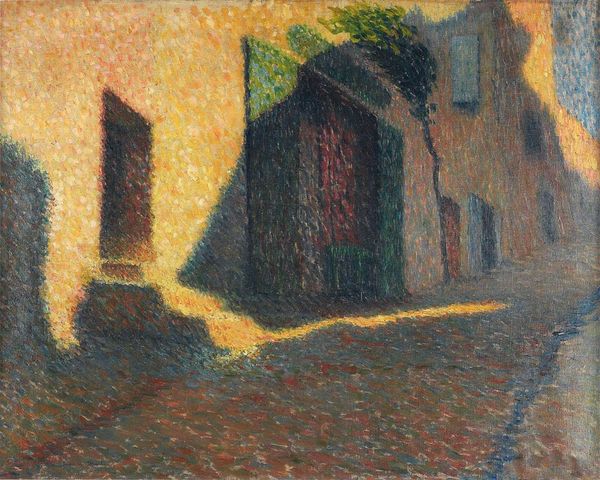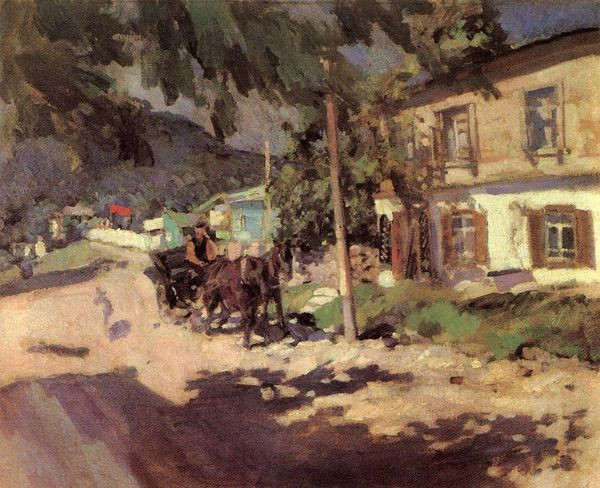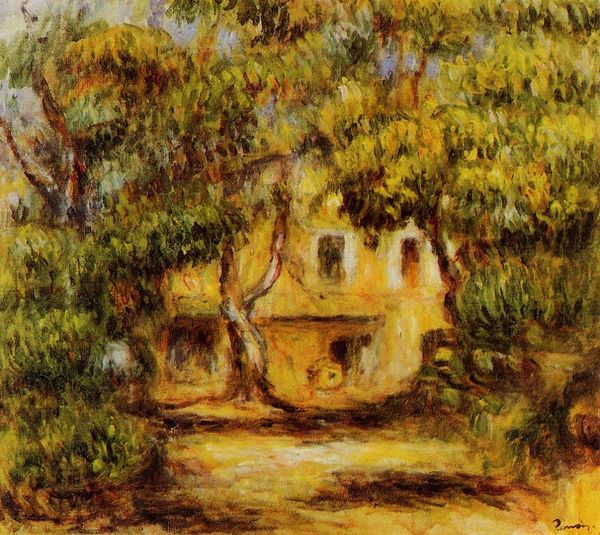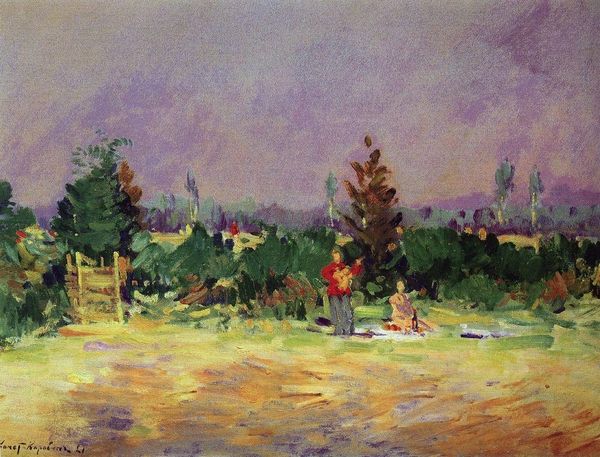
Copyright: Public domain
Editor: So here we have Bonnard's "The Pont de Vernon," painted around 1920. It's an oil painting, and the colors feel so warm, almost overwhelmingly so. I am particularly struck by the bridge’s reflections in the water. How do you read this piece? Curator: Considering this work from a materialist perspective, I immediately look at the visible impasto. You can see Bonnard building up the oil paint in layers. I'd suggest that’s indicative of a conscious decision to emphasize the very *process* of painting, almost like an industrial activity itself. How do you think the bridge’s function, as a site of transportation and exchange, plays into that materiality? Editor: That's interesting. It feels almost celebratory. All that luscious paint seems to elevate a mundane structure like a bridge, which connects spaces. Curator: Exactly! Bonnard isn't just capturing a pretty scene; he’s using materiality to engage with the social function of infrastructure. Think about the labor involved – the harvesting of pigments, the manufacturing of brushes, the construction of the bridge itself. All these elements underpin this seemingly idyllic image. Does that connection change how you perceive the image? Editor: It does. I’m now seeing beyond the pretty surface. It makes me think about what lies beneath, all that physical work that Bonnard translates through his impasto technique. It moves beyond aesthetics to production. Curator: Precisely. The Pont de Vernon transforms from a landscape into a visual record of material and labor. It’s fascinating how the materiality becomes a form of commentary itself. Editor: That really makes me reconsider what I see when I look at paintings; how materials and production underpin even the most seemingly straightforward landscape. Thank you for pointing that out!
Comments
No comments
Be the first to comment and join the conversation on the ultimate creative platform.
